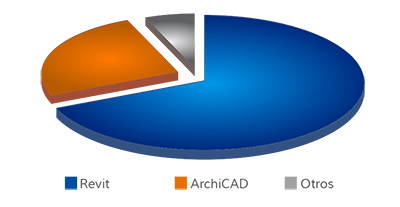
A BIM file of a product or material forms part of the image a manufacturing company wants to convey to its clients. This is why having a “quality” file is fundamental in order to get specified in projects. This increases brand exposure, and avoids BIM file rejection and dealing with the negative image that comes from developing a poor quality BIM catalogue.
Auditing is part of a file´s analysis. Its technical and graphical aspects are taken into consideration, as well its field use, and in-project use. A properly balanced BIM file should contain adequate graphical representation and well placed information to fully integrate into a project.
Manufacturers in BIM audits BIM files/Content developed by third parties. This service guarantees that a company has optimum BIM files, or if the files need to be revised.
We have more than 10 years of experience in developing BIM content.
Technical Analysis.
This is the combination of “Graphical Representation” of the object and the association of “Information” included in the file.
Graphical Representation.
Representation in project.
Construction industry professionals utilize different types of graphical representation for each aspect of a project.
This makes it necessary to distinguish between who will use the BIM file and how it is [the BIM file] configured, so that it is easy to use, informative, and does not interfere with other disciplines.
Product design vs. Product visibility (in project).
A common mistake that product manufacturing companies make is to develop BIM files with a product design mindset, or PIM (Product Information Modeling). This creates an information-rich model for the production of the product, but not for the use of a product in a project. PIM files are known to be heavier, in comparison to BIM files, and require more computing power in order to manage them well in a project.
BIM files need to be efficient and accessible to the different levels of BIM professionals. Professionals working on a BIM project require an optimized representation of a product, with all the information needed to specify it.
File information.
Basic and specific information.
The file must have basic information about the product, the company, and relevant information according to its product-type and use.

BIM software build.
Updated releases of BIM software may include new functions, tools, and informational fields. This limits the information and/or abilities of files designed for older versions, and necessitates updating the content according to the most current software releases.
Information validity.
Many available BIM files contain outdated information or broken URL´s. This invalidates the included information, and therefore, the BIM file is not adequate for inclusion in a project.
Information according to a Level of Development (LOD).
The BIM file needs to match the “Level of Development” for which it is intended. Depending on the LOD, the amount of information will vary.
The BIM files should also include information regarding post-construction stages, like Management and Maintenance, in a BIM project.

The size of the BIM file has to be in accordance to its graphic representation and information. Creating a BIM that weighs too much can strain project and/or computer performance. If this happens, the file will surely be replaced by another, lighter and better suited to be specified.
Market analysis.
Study is focused on, “in which market niche do we want to utilize the BIM files?”
Information per market type.
Not all countries require the same information, certificates, and product specifications. This makes it necessary to define the information to be included in a BIM file destined for a particular type of market. An example of this would be the different requirements for American and European Union markets, where the same information needs to be represented in different ways and with their adequate certifications.

Most used BIM software.
A good strategy to have for investing in BIM files, is the development of the BIM catalogue in a market niche according to its software brand and build. This strategy will provide a clear way to measure ROI.
The most widely used software for the inclusion of BIM catalogues is Revit from Autodesk, that has a global market share of 59% and Archicad from Graphisoft, having a 34% global market share.
Figures. Bimetica´s market study report 2013/2014. Based on realized survey and information from Bimetic.com database.

BIM File Language.
The most widely used BIM files are in English, 82% making it the most prominent language in BIM projects. However, Spanish language BIM files have risen to 12%, which makes Spanish a clear second option.
Figures. Bimetica´s market study report 2013/2014. Based on realized survey and information from Bimetic.com database.

Other markets, like. Portugual, Russia, and China are beginning to have an impact in BIM through requirements of public an private agents that specify the development of BIM projects in their own language.
Legal analysis.
Legal analysis of a BIM file includes the validation of officially licensed software used to develop the files, copyright, property and intellectual rights, and proper endorsement.
Officially Licensed Software.
Developing a BIM file or catalogue with unlicensed software generates an embarrassing situation for a professional and office who has specified the product in a BIM project.

Public or private competitions require, under contract, that the submitted BIM projects be developed with officially licensed software. Third party components, such as BIM files must also comply with this prerequisite.
If an illegal issue were to be detected, the intellectual as well as industrial property rights of the software developer would be violated, as well as promoting unfair competition. In the market, This puts at risk the Project´s assignment of rights to the end client.

BIM file´s copyright.
Manufacturing companies, that provide BIM files without copyright, cannot guarantee a safe transfer or use of their files to professionals willing to specify their products. This is because the intellectual and industrial property rights are not under their control.

Endorsed information.
This is a fundamental prerequisite for a quality BIM file. Manufacturing companies must guarantee and endorse the product information included within BIM files, since the decisions made to specfy, and susequently buy, specified products are defined by the information contained within.
This means that if a BIM file has incorrect, outdated, and unverified information, then it may cause confusion and may even give way to false advertising.










